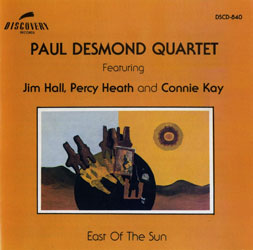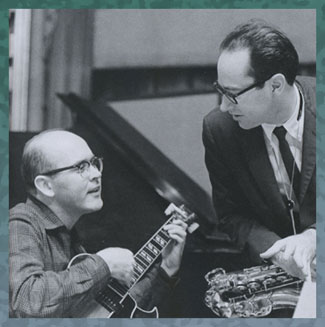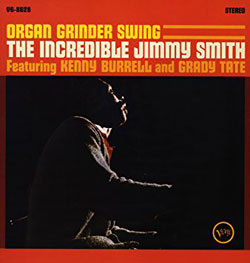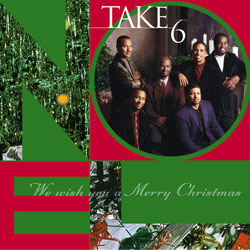

|
Soundclip:
|
| See Steve's Hand-Written Solo
Transcription |
|
Paul Desmond and Jim Hall solos on: "Greensleeves"(Traditional) When one has been a Jazz fan, and a perpetual student of this great music and its history, both as performed live and on recordings, when one sees a recorded length of 2:05, as is the interpretation of "Greensleeves" by Paul Desmond as part of one of his great quartet recordings featuring Jim Hall, one has to wonder, why on earth would these great players even bother to do such a thing? I have owned Desmond's "EAST OF THE SUN"(Discovery) album in various forms dating back to the LP from 1959 and as part of Michael Cuscuna's wonderful Mosaic Records box sets, in this case, "THE COMPLETE RECORDINGS OF THE PAUL DESMOND QUARTET WITH JIM HALL," but in all that time, I have never really paid much, if any, attention to this track, because it was just so short. Then, the other day, I received an e-mail from a musician asking me if I had, or knew of someone who had, a transcription of Paul Desmond's solo on "Greensleeves." I had to write back and politely say that,  "No, I don't have one of that particular solo in my collection from the old days." And, I gave him a couple of suggestions as to how he might go about tracking one down, as he had already been exploring the various Google options. It wasn't too long after that, that I wondered why someone would ask about that particular solo? What could have been so great about it? So, I went into my record collection, and located the tune and the performance, and the first thing that I saw, after decades of not listening to it, was that it was, again, 2:05 in length. What kind of substantive solo could have appeared on a tune of that length? And so, I listened again. "No, I don't have one of that particular solo in my collection from the old days." And, I gave him a couple of suggestions as to how he might go about tracking one down, as he had already been exploring the various Google options. It wasn't too long after that, that I wondered why someone would ask about that particular solo? What could have been so great about it? So, I went into my record collection, and located the tune and the performance, and the first thing that I saw, after decades of not listening to it, was that it was, again, 2:05 in length. What kind of substantive solo could have appeared on a tune of that length? And so, I listened again.I listened as if it was the first time that I had ever heard it, expecting the usual thoughtful Jim Hall chord changes drawn from some eminently musical perspective of his, but, in the end, I heard none of that. Here, accompanied by Percy Heath(Ac. Bass); and Connie Kay(Drums), this traditional song is played with a most delicate touch as a Jazz waltz in 3/4 [though I suppose that I could have written it out in 6/8 just as well]. During the performance, Jim Hall almost avoids any of the more sophisticated harmonic touches that we associate with him on the guitar, and sticks to some very basic chord changes for the piece. Given the year, 1959, and knowing what the state of the Jazz business was then, it's hard to believe that producer Bob Prince was thinking ahead that, it might be nice to have a track like this for a future Christmas album, or a Jazz Christmas compilation? In those days, people, on the business side, were not thinking about such marketing tools. So, it is hard for me to imagine that that could have been the reason for having this tune at such a short length. The other consideration would have been that, in the days of the LP, of vinyl, everyone knew that the best fidelity and the hottest pressing could only come from having each side of the LP be clocked in at 18-minutes or less. But, if you look at the the track timings for this recording in total, Side A would have to be 20-minutes or longer with just 3 tunes, and Side B would have been close to 20-minutes with the 4 remaining tunes. So, if you're already well over 18-minutes, why not just play, and have "Greensleeves" be of a normal length of somewhere between 5-8 minutes depending upon what happened? Where the form for "Greensleeves" is concerned, there are probably any number of ways that it could be approached. But, from what I hear, it would seem that, where the melody statement is concerned, Paul Desmond and Jim Hall are hearing it as an [A]-[B] form with each section being 16 bars in length. Paul Desmond's solo conforms to that form, while Jim Hall simply plays over 1 16-bar [A] section, and that is followed by the final return of the melody, and that is also only stated as one [A] section. So, this is a little odd, but that's how you can chop a song form down, and have it come in at 2:05! Desmond and Hall have always seemed, at least to me, to be two musical souls that were born to play together. They both have a great love and respect for a melody, and beautiful harmonies to embrace that same melody. Where improvisation is concerned, they are both melodic players in every sense, and the flow of ideas always seems completely natural with a most organic flow to those ideas. Here, they are only playing one chorus for Paul Desmond, and what I will call a 1/2-chorus for Jim Hall. So there is hardly an opportunity for the extended development of melodic ideas.  As a listener, as a music fan, this is most frustrating for me. I think that this is the 1st time that I have ever addressed 2 solos within one analysis, but, as they are both so short, here it feels appropriate. As I normally do not put key signatures on any of my transcriptions, usually because popular music and Jazz songs move through so many key areas, that, to me, there's no point most times in having a key signature when it is often discarded after a few bars. "Greensleeves" as interpreted by Desmond-Hall seems to clearly be in the key of Db major, even if the final cadence is to an Ebmaj7 chord. As is almost always the case, Paul Desmond's solo is a model of diatonic playing. The only true accidental that you find is in bar 14 both times with the D-natural to observe the Bb7 chord before the final cadence. As a listener, as a music fan, this is most frustrating for me. I think that this is the 1st time that I have ever addressed 2 solos within one analysis, but, as they are both so short, here it feels appropriate. As I normally do not put key signatures on any of my transcriptions, usually because popular music and Jazz songs move through so many key areas, that, to me, there's no point most times in having a key signature when it is often discarded after a few bars. "Greensleeves" as interpreted by Desmond-Hall seems to clearly be in the key of Db major, even if the final cadence is to an Ebmaj7 chord. As is almost always the case, Paul Desmond's solo is a model of diatonic playing. The only true accidental that you find is in bar 14 both times with the D-natural to observe the Bb7 chord before the final cadence.Where phrasing is concerned, this is where I find these two solos by these wonderful players to be most interesting. Desmond's solo is almost exclusively played using simple arpeggios. And almost all of them, whether ascending or descending, begin on beat two of this 3/4 Jazz waltz. Though there is almost never anything bluesy within any Desmond solo, there almost a moment that's close to it at the end of bar 14 of [A]. As the entire solo is made-up of 8th-notes, and some 8th-note sub-divisions, there is one classic Jazz phrasing element that you can see at the end of bar 6 of [B]. In bars 3-6, Desmond makes a nice break from the arpeggios, and simply varies the configuration in a nice way in bars 3-4, and then extends that idea in bars 5-6. When all is considered, it still stands as a wonderful solo, if all too short. But he never loses his sense of romantic melodicism. As I have already stated, if you thought that Paul Desmond's solo was short, Jim Hall's solo is even shorter, 1/2 the length. Still the difference in the two approaches, especially rhythmically, is quite striking. Hall's solo has a much more scalar approach, with far more 8th note rhythmic syncopations. Like Desmond, everything that Hall plays, in this case, is completely diatonic. But, if you were to place yourself in this same situation, given only a 16-bar solo over very traditional chord changes, what would you do? The point becomes this, do you really think that it would be a musical thing to do to try to play everything that you know in those 16 bars? The answer is simply "No!" One just can't do that, because it would be horribly unmusical, and would sound like you were trying force everything into one small space. Doing something like that just never sounds good! Never! So, what Jim Hall chose to do here was absolutely perfect, and eminently musical. When I decided to write out Jim's solo, I chose to present it in two staves, adding in the lower one to offer Percy Heath's acoustic bass part. I believe that it provides an interesting insight into seeing two moving lines at work. What Heath does is more about the art of accompaniment, rather than a conversational style of playing. One thing that I would love to add here is about Jim's recorded sound on this particular track. It sounds to me that his guitar, probably his Gibson ES-175, was recorded with a live mic in front of him to capture a more acoustic sound in addition to the electric signal that was getting recorded through his amp. It's a nice touch, though the recording in total is very dry sounding, in other words, no reverb. In the end, I just love both Paul Desmond and Jim Hall and, in both of them, there is so much to emulate in a world that seems to want to be more abstract and dissonant. We all could benefit from listening to more of these great masters. Had someone not written and asked me about this Desmond solo, and if I had had a transcription of it laying around, I would never have even considered doing it, because it's just too short, and doesn't appear to have too many great points of interest. But, once I got into it and did the work, I came to view it a bit differently. Still, I would say to any musician, young or old, that, where transcriptions and transcribing are concerned, the best way to get something from the experience is to DO THE WORK YOURSELF!!! Yes, with the web being a great, great resource, and one can locate almost anything that you seek, if one is patient, persistent and industrious in their searches, it still doesn't replace the benefits of putting in the effort and doing it yourself. And, doing it well. So, I will leave you with that thought! Of course, our story is not over yet! When I sent the transcription as a gift to the guy who had inquired about it, he wrote me back that what I sent him had been cut-off after only 32 bars!!! Well, as you all now know, the Desmond solo with Jim Hall is only 32 bars!!! So that told me that there must be another recorded version of Paul Desmond playing "Greensleeves"! And, sure enough, no sooner had I again turned to Google, there, lo and behold, I discover that there was, in fact, another version,  recorded live on Christmas day, December 25th, 1971, some 12 years later, by Paul Desmond & The Modern Jazz Quartet!!! And, of all things, this version is only 3:10 in length. At least, they played it in the same key in which he had recorded it with Jim Hall. I am left only to say, "How about that?!?!?!?" recorded live on Christmas day, December 25th, 1971, some 12 years later, by Paul Desmond & The Modern Jazz Quartet!!! And, of all things, this version is only 3:10 in length. At least, they played it in the same key in which he had recorded it with Jim Hall. I am left only to say, "How about that?!?!?!?"If you were to ask me, "Steve, what is your favorite Jazz version of "Greensleeves"? The answer, for me, is as simple as can be, and it would have to be the version by organist Jimmy Smith along with Kenny Burrell(guitar) and Grady Tate(drums) that first appeared on Smith's classic album, "ORGAN GRINDER SWING"(Verve) from 1965. If you contrast it with the Desmond-Hall version, the fade alone, over a wonderful vamp, is almost 3-minutes long, and Smith's organ solo is also well over 3-minutes!!! And then, of course, more time is occupied by the melody statements, and solos by both Burrell and Tate. During my college years at U.C.L.A.('65-'69), I can't begin to tell you how many hours I spent listening to this album and all of its tunes. To this day, it still sounds absolutely great to me, and that vamp is classic: 1 bar each of Cm7(9sus) and G7#5 with both voicings having G on top. The original lyrics to "Greensleeves" [once known as "Lady Greensleeves"] are hardly so festive, and apparently date back to King Henry VIII, how about that?!?!?! There, I've said it again! Anyway, if I was looking for a vocal interpretation of this tune,  sung as "What Child Is This?" by the brilliant group Take 6, you could find it on their 2nd album of Christmas songs titled, "WE WISH YOU A MERRY CHRISTMAS." Accompanied fundamentally by the great Paul Jackson, Jr. on guitar, the sophisticated harmonies of Take 6 tend to make all other versions pale by comparison and serve as a supreme inspiration to all of us who seek higher levels of harmonic sophistication. sung as "What Child Is This?" by the brilliant group Take 6, you could find it on their 2nd album of Christmas songs titled, "WE WISH YOU A MERRY CHRISTMAS." Accompanied fundamentally by the great Paul Jackson, Jr. on guitar, the sophisticated harmonies of Take 6 tend to make all other versions pale by comparison and serve as a supreme inspiration to all of us who seek higher levels of harmonic sophistication.As we prepare to say "Goodbye!" to 2016, we are hoping that everyone had a very MERRY CHRISTMAS and a ¡FELIZ NAVIDAD! And, of course, now it is time to finally say, yet again, HAPPY NEW YEAR!!! Y por supuesto, les deseamos un muy ¡FELIZ AÑO NUEVO! Wishing you all good health, happiness, and please, PEACE everywhere!!! Personally speaking, I have absolutely no idea what to expect from 2017 and beyond. I don't want to think for a single moment that things could get worse for us here in the USA now that "we" have elected Donald Trump as our president!!! Thanks again for your wonderful messages via the CONTACT STEVE page, as well as the supportive comments that appear in our GUESTBOOK.
[Photo of Jim Hall and Paul Desmond
by: Frank Driggs Collection] |